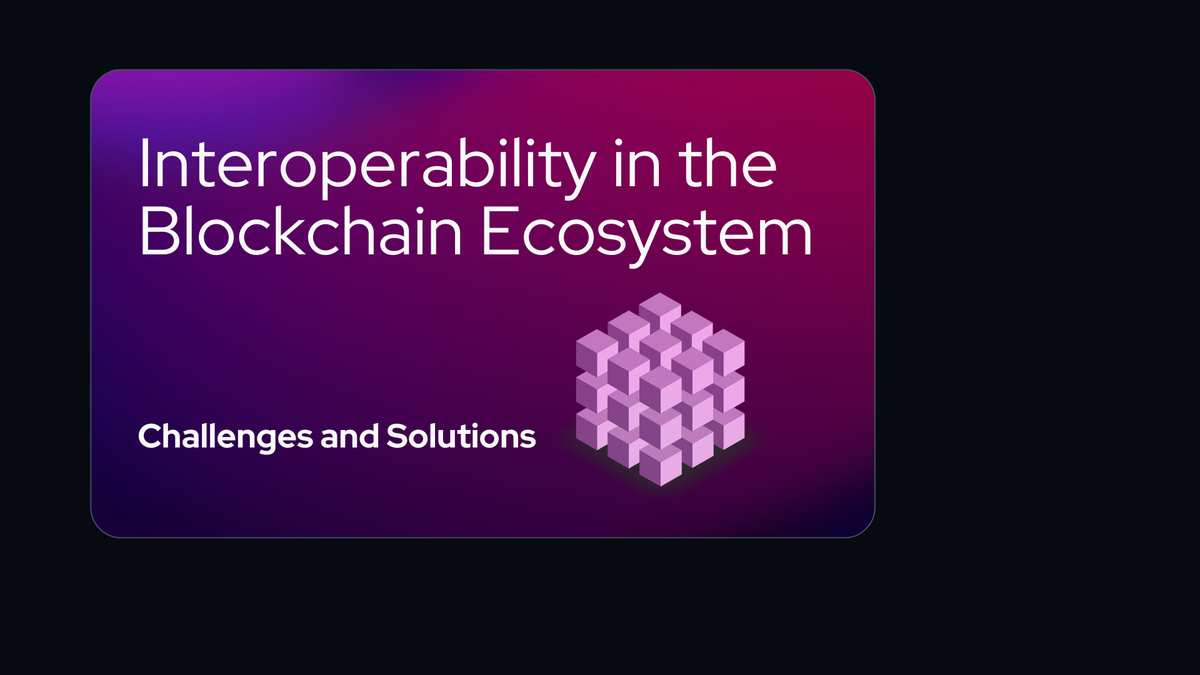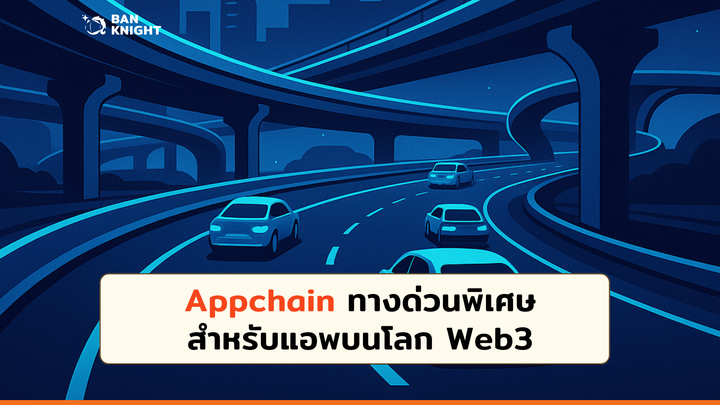Interoperability in the Blockchain Ecosystem: Challenges and Solutions

Introduction to Blockchain Interoperability
Blockchain interoperability refers to the ability of different blockchain networks to interact with one another by exchanging assets, data, or both, as defined by Bitstamp's guide on blockchain interoperability. It is akin to creating a universal translator for blockchains, enabling them to communicate and cooperate effectively, much like how the internet connects disparate computer networks. Research suggests that interoperability is essential for reducing fragmentation and friction in the growing blockchain ecosystem, where hundreds to thousands of blockchains coexist, each with different asset issuers, user bases, applications, and technological strengths, as noted by Chainlink's explanation of blockchain interoperability challenges.
The importance of interoperability cannot be overstated. Without it, blockchains operate in silos, limiting their potential and creating inefficiencies. For instance, a user might hold assets on Ethereum but need to use them on Solana, requiring cumbersome and often risky processes like centralized exchanges or cross-chain bridges. Interoperability solutions aim to eliminate these barriers, allowing for direct, secure, and efficient interactions between blockchains, fostering innovation, increasing liquidity, and enhancing user experience.
Understanding Blockchain Interoperability
To understand interoperability, it’s helpful to think of blockchains as different countries with their own languages, currencies, and laws. Interoperability is like creating a common currency, a universal translator, and a set of international laws that allow these countries to trade, communicate, and cooperate effectively. In blockchain terms, interoperability means:
- Asset Transfer: The ability to move digital assets (like cryptocurrencies or tokens) from one blockchain to another without losing their value or utility. For example, transferring Bitcoin to Ethereum for use in DeFi applications.
- Data Sharing: The capacity to share data between blockchains, enabling smart contracts on one chain to access information from another. This is crucial for applications that require real-world data, such as supply chain tracking.
- Functionality Integration: Allowing decentralized applications (dApps) on one blockchain to interact with those on another, expanding the possibilities for what can be built and used. For instance, a DeFi dApp on Ethereum could interact with a gaming dApp on Polygon
Achieving this requires overcoming significant technical hurdles, as each blockchain has its own architecture, consensus mechanism, and programming language. The evidence leans toward interoperability being a complex but necessary goal, with solutions like cross-chain bridges and interoperability protocols addressing these challenges, as discussed in CoinBureau's analysis of blockchain interoperability.
Current State of Blockchain Interoperability
As of 2025, the blockchain ecosystem is characterized by a multi-chain approach, where hundreds of blockchains coexist, each with unique features and use cases. This fragmentation is driven by the need for scalability, privacy, and specific functionalities, but it has led to isolated networks, much like the early internet with siloed systems, as noted by OMFIF's article on finance needing blockchain interoperability. Current methods to achieve interoperability include:
- Cross-Chain Bridges: Protocols like the Portal Token Bridge, which connects Ethereum, Solana, Polygon, Sui, and NEAR, and Celer cBridge, linking over 40 blockchains and Layer 2s, facilitate asset transfers.
- Sidechains and Relay Chains: Sidechains, such as those used in Polkadot’s parachain model, operate alongside a main chain, while relay chains like Polkadot’s connect multiple blockchains for communication.
- Interoperability Protocols: Projects like Cosmos use the Inter-Blockchain Communication (IBC) protocol, and Polkadot provides tools for building and connecting blockchains, creating an "Internet of Blockchains."
- Oracles: Chainlink’s Cross-Chain Interoperability Protocol (CCIP) enables token transfers and smart contract messaging, enhancing cross-chain interactions.
These solutions are in various stages of development and adoption, with some, like Chainlink’s CCIP, already achieving level-5 cross-chain security and being used by DeFi protocols like Aave’s GHO and traditional finance institutions like DTCC and ANZ, as mentioned in Chainlink's interoperability challenges article.
Challenges in Achieving Interoperability
Despite progress, achieving blockchain interoperability is fraught with challenges, as highlighted by multiple sources. These include:
- Technical Heterogeneity:
- Blockchains differ in their underlying technology, such as consensus mechanisms (e.g., Proof of Work, Proof of Stake), data structures, and programming languages. For example, Ethereum uses the Ethereum Virtual Machine (EVM), while Solana uses a different architecture, making direct interaction challenging, as noted by Bitstamp's guide.
- This diversity complicates the creation of universal interoperability solutions, as each blockchain may require custom integrations.
- Security Risks:
- ross-chain interactions introduce new attack vectors. For instance, cross-chain bridges have been targets of hacks, with over $2.8 billion in user funds lost due to insecure bridges, according to Chainlink's security insights. Specific examples include the Wormhole bridge hack, where $320 million was lost due to a smart contract vulnerability, and the Ronin Bridge Hack, where $600 million was stolen, as mentioned in CoinBureau's analysis.
- Ensuring the security of transactions across chains is critical, as differing consensus mechanisms and validation methods can create vulnerabilities.
- Scalability Issues:
- As more blockchains and users come online, the systems designed to connect them must handle increased loads without compromising speed or security. For example, Ethereum’s congestion has been mitigated by Layer 2 solutions, but these must interoperate seamlessly with other chains, a challenge noted in ScienceDirect's survey on cross-chain solutions.
- Standardization:
- The lack of universal standards for interoperability means that different solutions may not work together, leading to fragmentation. Efforts like ERC standards (e.g., ERC-7281, ERC-7683) aim to address this, but widespread adoption is still a work in progress, as discussed in CoinBureau's analysis.
- The absence of a single standard, similar to TCP/IP for the web, hinders unified liquidity, security, and workflows across chains.
- Regulatory and Legal Hurdles:
- Different jurisdictions have varying regulations regarding blockchain and cryptocurrencies, which can complicate cross-chain activities, especially when they involve international transfers, as noted by OMFIF's article. This adds complexity to ensuring compliance and legal enforceability.
- Trust and Validation:
- Since blockchains are trustless systems, ensuring that data or assets from one chain are valid and secure on another is a complex problem. This often requires additional layers of verification or trusted intermediaries, which can undermine decentralization, a point raised in Chainlink's interoperability challenges.
These challenges highlight why interoperability is not just a technical problem but also a matter of design, security, and governance, with ongoing debates on balancing security and decentralization, especially given high-profile hacks.
Solutions and Technologies
To address these challenges, the blockchain community has developed a range of solutions and technologies, as detailed in various sources. Some of the most prominent include:
- Cross-Chain Bridges:
- These are protocols that allow assets to be transferred between different blockchains. For example, the Portal Token Bridge connects Ethereum, Solana, Polygon, Sui, and NEAR, enabling users to move assets across these networks, as mentioned in Bitstamp's guide. Another example is Celer cBridge, which connects over 40 blockchains and Layer 2 solutions, noted in the same source.
- However, bridges must be designed with robust security measures to prevent hacks, addressing the security risks highlighted earlier.
- Sidechains and Relay Chains:
- Sidechains are separate blockchains pegged to a main chain, allowing for two-way transfers of assets. They operate as layer-2 scaling solutions, increasing scalability and efficiency, with their own consensus protocols for privacy and security, minimizing additional trust, as discussed in OMFIF's article.
- Relay chains, like those used in Polkadot, connect multiple blockchains (parachains) to a central chain that handles cross-chain communication, a model detailed in CoinBureau's analysis.
- Interoperability Protocols:
- Projects like Cosmos use the Inter-Blockchain Communication (IBC) protocol to enable different blockchains to communicate directly, creating an "Internet of Blockchains," as noted in Bitstamp's guide. Similarly, Polkadot’s architecture allows for parachains to interact through its relay chain.
- Chainlink’s Cross-Chain Interoperability Protocol (CCIP) enables token transfers and smart contract messaging across different blockchains, achieving level-5 cross-chain security, powered by decentralized consensus, and is used by DeFi protocols like Aave’s GHO and traditional finance institutions like DTCC and ANZ, as mentioned in Chainlink's challenges article.
- Oracles:
- While primarily used for bringing off-chain data onto blockchains, oracles like Chainlink’s CCIP also facilitate cross-chain interactions by providing a secure way to transfer data and value between chains, addressing the oracle problem, as discussed in Chainlink's education hub.
- Layer 2 Solutions:
- These are built on top of existing blockchains to improve scalability and can also enhance interoperability. For instance, Ethereum’s Layer 2 solutions like Arbitrum and Optimism can interact with other chains through bridges or other mechanisms, addressing scalability issues, as mentioned in Bitstamp's guide.
Each of these solutions has its strengths and weaknesses, and often, they are used in combination to achieve comprehensive interoperability, with ongoing efforts to enhance security and standardization.
Case Studies and Examples
Several projects have made significant strides in achieving interoperability, providing real-world examples of how these solutions work:
- Polkadot: Polkadot’s relay chain connects multiple parachains, each of which can have its own governance and tokenomics. This setup allows for seamless communication and asset transfer between parachains, designed to scale with the growing number of blockchains, making it a key player in the interoperability space, as detailed in CoinBureau's analysis.
- Other Notable Projects:
- Projects like Axelar, LayerZero, and Hyperlane focus on cross-chain messaging protocols, enabling dApps to interact across chains, addressing the fragmentation issue, as discussed in CoinBureau's analysis.
- Solutions like Wormhole and Portal Token Bridge provide asset transfer capabilities across multiple ecosystems, though they have faced security challenges, such as the Wormhole hack losing $320 million, highlighting the need for robust security measures.
Conclusion
Understanding blockchain interoperability is essential for navigating its complexity and potential. From its definition as the ability to connect different blockchains to the challenges of technical heterogeneity and security risks, and the solutions like cross-chain bridges and protocols like Polkadot and Cosmos, it offers a way to create a unified ecosystem.
Key Citations
- Towards Blockchain Interoperability Comprehensive Survey on Cross-Chain Solutions
- Chainlink Blockchain Interoperability Challenges Explained
- CoinBureau Blockchain Interoperability Seamless Communication Guide
- OMFIF Finance Needs Blockchain Interoperability Solution
- Bitstamp Blockchain Interoperability Future of Connected Chains
MITOSIS official links:
GLOSSARY
Mitosis University
WEBSITE
X (Formerly Twitter)
DISCORD
DOCS


Comments ()